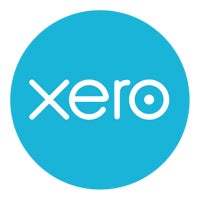In small business, “gross profit” and “net profit” are commonly confused terms. While they sound similar, they serve different purposes in understanding an entity’s financial health.
Gross profit does not factor in items like taxes and one-time charges. On the other hand, net profit incorporates these expenses. The latter is a more finalized number usually used in executive decisions. Nonetheless, both terms are crucial to a successful operation.
Don’t worry if this sounds complex. Affordable small-business accounting software can easily automate these calculations. But understanding the fundamentals of these accounting concepts can still be valuable, so let’s get into it.
Featured Partners: Accounting Software
What is gross profit?
Gross profit represents the basic profitability of a business’s products or services. It is calculated by subtracting the cost of goods sold (COGS) from the total revenue. COGS, also known as production costs, includes all the direct costs of creating a product or delivering a service, like materials and labor. The basic formula looks like this:
Gross Profit = Sales Revenue – Cost of Goods Sold
Let’s illustrate an example. Say a company sells handmade furniture. To determine the entity’s gross profit, add up all revenue from customer sales. In this case, they sold 10 couches at $1,000 each, totalling $10,000.
Next, calculate the cost of materials, like wood and nails, and labor spent making the product. To make the furniture that sold, the company spent $3,000 in supplies and $1,000 on payroll, equalling $4,000 combined.
You’ll then subtract the $4,000 in costs from the $10,000 in sales to reach $6,000, which is the gross profit.
Gross profit is important because it shows how efficiently a company produces and sells its products. A higher figure indicates better efficiency and potential for long-term profitability. Conversely, a worse number suggests there is room to improve operations or increase prices. And a negative number indicates an outright loss.
What is net profit?
Net profit, also known as net income, remains after all operating expenses, like taxes, interest and other costs, are deducted from a company’s gross profit. Simply put, it’s what the business earns after all costs and overhead are paid.
Net Profit = Sales Revenue – Cost of Goods Sold – Operating Expenses
The term is also referred to as the “bottom line.” If the number is negative, the business lost money.
Here are a few sample expenses factored into net profit:
- Rent
- Utilities
- Salaries (apart from those included in COGS)
- Marketing expenses
- Shrinkage (theft, fraud, etc.)
- Taxes and other government levies
Crucial executive decisions are often based on net profit. That’s because the figure is a final, comprehensive measure that quickly conveys a business’s health. After all, there is no further calculation needed for most practical purposes. Compare this fact to gross profit, which is only a part of a larger equation.
Net profit vs. gross profit: Key differences
Let’s recap the primary differences between these two essential terms.
Scope of expenses
Gross profit only considers direct costs (COGS), while net profit accounts for all costs, like operating expenses, taxes and interest.
Indication of efficiency
Gross profit highlights the efficiency of production and sales, whereas net profit shows the overall profitability, including the effects of overhead, theft and other operational costs.
Use in business decisions
Gross profit helps in pricing strategies and controlling production costs, while net profit is crucial for broader financial strategies, investments and understanding of the overall financial strength of the business.
Gross profit and net income examples
Now that we’ve analyzed these terms’ definitions and basic use, let’s look at another real-world example.
Gross profit
A bakery sold cakes worth $20,000 last month. The cost of flour, eggs, sugar, other baking ingredients and direct labor totaled $8,000. The gross profit would be calculated like so:
Gross Profit = Total Revenue – COGS
= $20,000 – $8,000
= $12,000
This $12,000 figure is the gross profit, indicating the basic profitability from selling cakes.
Net profit
Continuing with the bakery example, let’s add other expenses. We’ll tack on rent ($2,000), utilities ($500), marketing ($1,000) and small-business loan interest fees ($500). For simplicity’s sake, we’ll assume there are no other expenses involved in doing business.
Here’s what the net profit calculation would look like:
Net Profit = Gross Profit – Total Other Expenses
= $12,000 – ($2,000 + $500 + $1,000 + $500)
= $8,000
This $8,000 amount is the net profit, reflecting the overall financial outcome after covering all costs.
Recommended accounting software
Keeping track of gross and net profit takes time and effort. Most successful businesses employ accounting software to automate these calculations. Here are two beginner-friendly picks to help you get started.

Xero
Xero stands out as a robust accounting platform, celebrated for its user-friendly interface and comprehensive features. It allows small-business owners to easily track their revenue and expenses, with the added benefit of automatically calculating gross and net profit. Xero offers the advantage of real-time financial monitoring, aiding in swift and informed decision-making. It also reduces the risk of manual errors by automating routine tasks like invoicing and bill payments.
Moreover, Xero’s integration with hundreds of business apps allows for a customized experience. Its dashboard presents a clear and concise overview of your financial health, simplifying the understanding of your business’s profitability.

Patriot Software Accounting
Patriot Software Accounting is particularly known for its affordability and straightforward approach, making it an ideal choice for small businesses and those new to using accounting software. It facilitates easy tracking of income and expenses, which is crucial in accurately calculating gross and net profit.
Generating financial reports, such as profit and loss statements, is a breeze with Patriot Software. The platform is designed with simplicity in mind, ensuring ease of use without a steep learning curve. This focus on essential features makes Patriot Software a highly accessible option for small-business owners who need to keep track of their profits hassle-free.
Takeaway
Gross and net profit are more than just numbers on a financial statement. They are vital indicators of your business’s health and efficiency. These metrics help you make strategic decisions to improve profitability, ensuring the long-term success of your business. Bottom line, both gross and net profit go hand in hand.





